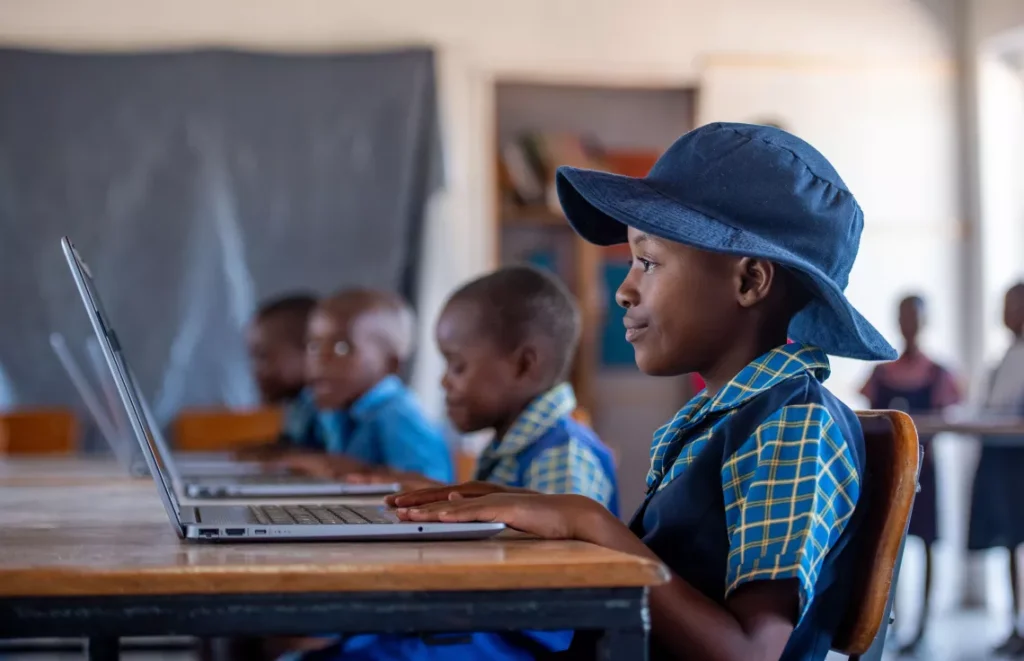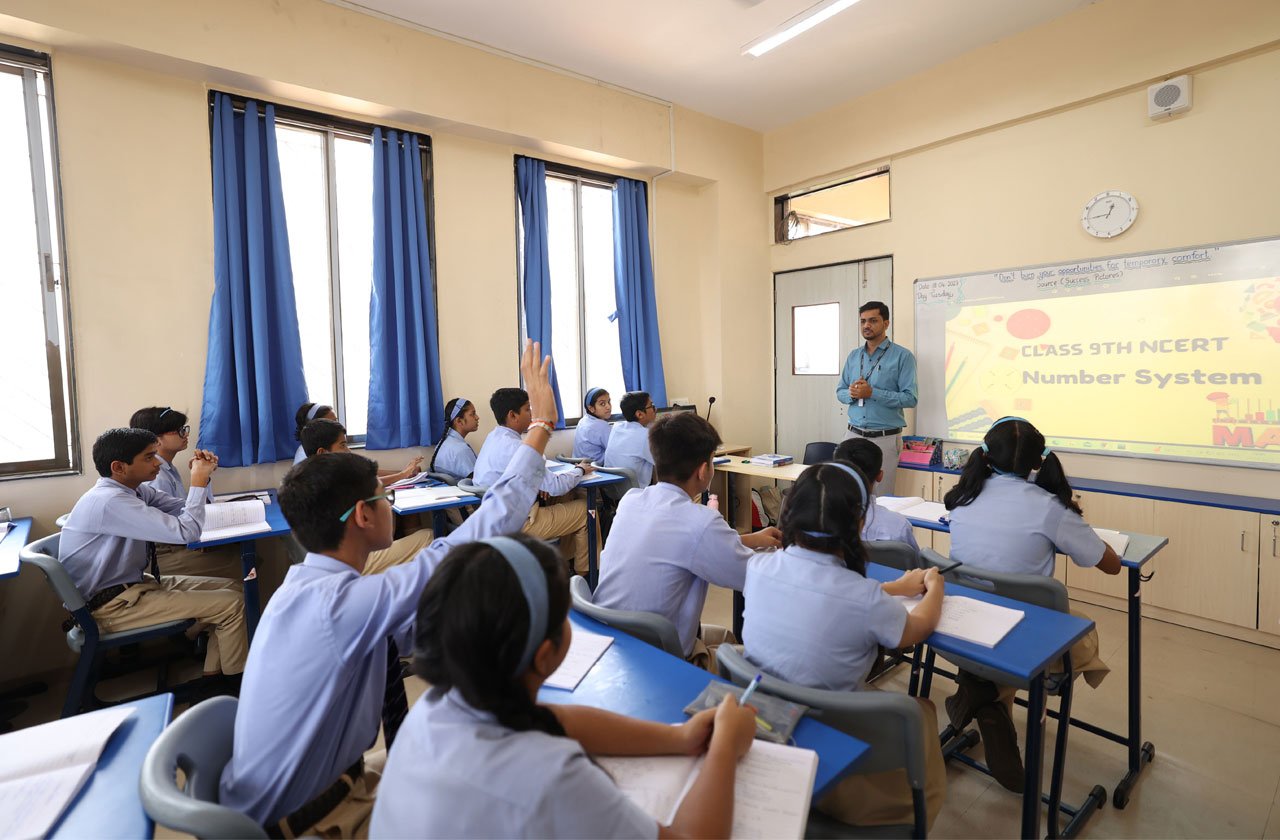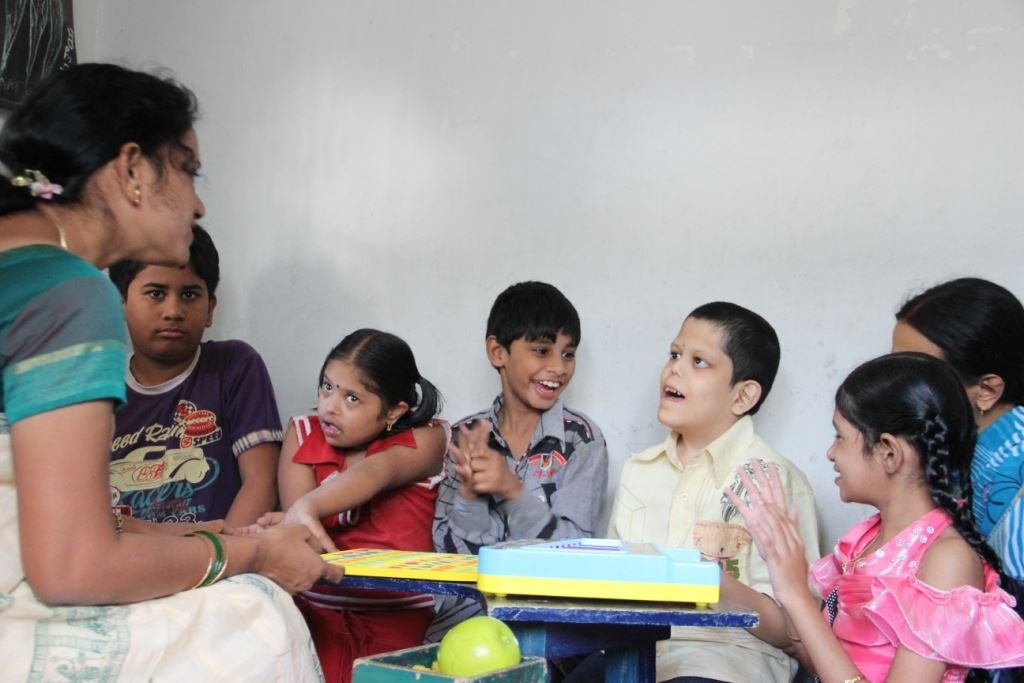The education system has long been the cornerstone of societal development, shaping individuals, communities, and nations. However, as the world continues to evolve, the traditional models of education are being challenged, with new ideas and technologies reshaping the way we think about learning. The phrase “Reimagining the Education System” has become central to educational discourse, as policymakers, educators, and communities grapple with how to better prepare students for a rapidly changing world. This article delves into the challenges, opportunities, and innovative strategies that are driving the transformation of the education system, as we look toward the future of learning.
Key Takeaways
- The education system must evolve to meet the demands of a rapidly changing world, focusing on 21st-century skills, critical thinking, and creativity.
- Technology, personalized learning, and social-emotional learning are central to the transformation of education.
- Equity and inclusion must be prioritized to ensure all students have access to high-quality education, regardless of their background.
- Teacher empowerment, professional development, and community involvement are essential to creating a sustainable and effective education system.
As we reimagine the future of education, it is essential to keep these principles at the forefront to ensure that every learner is empowered to succeed.
The Need for Change
The current education system, while successful in many respects, faces increasing pressure to adapt to the needs of a globalized, technology-driven world. Students today must be prepared to navigate a landscape that demands not only academic proficiency but also critical thinking, creativity, and adaptability. Traditional models of education, which often focus heavily on rote memorization and standardized testing, may not adequately prepare students for this dynamic environment.
Additionally, there are persistent challenges related to equity, access, and the integration of technology in classrooms. In many parts of the world, students still lack access to basic educational resources, and disparities between affluent and underserved communities continue to widen. As a result, the need for a more inclusive, equitable, and innovative education system has never been more urgent.
Key Drivers of Change in the Education System
Technological Advancements
The rise of digital technology has brought both challenges and opportunities to the education system. From the advent of online learning platforms to the increasing use of artificial intelligence (AI) and data analytics in classrooms, technology is transforming how education is delivered and experienced. With the global shift to remote learning during the COVID-19 pandemic, educators and students have become more familiar with digital tools and platforms, opening the door for more flexible and accessible learning environments.
Key Technologies Driving Change:
- Artificial Intelligence (AI): AI can offer personalized learning experiences by analyzing students’ strengths and weaknesses and tailoring lessons accordingly. AI-powered tutors and chatbots can provide immediate support to students, allowing for more individualized attention.
- Online and Hybrid Learning: Online education, once considered supplementary, has become a critical part of the learning landscape. Hybrid learning models, which combine in-person and online instruction, offer flexibility and accessibility.
- Virtual and Augmented Reality (VR/AR): VR and AR are transforming how students engage with content, providing immersive learning experiences in subjects ranging from history to science and mathematics.
- EdTech Platforms: Platforms like Khan Academy, Coursera, and Duolingo are democratizing education, allowing students of all ages to access high-quality learning materials and courses regardless of their geographical location.
Personalized Learning
A significant shift is taking place towards personalized learning, where the educational experience is tailored to each student’s needs, abilities, and interests. The one-size-fits-all model is being replaced by a more individualized approach, which recognizes that every student learns differently.
Personalized learning leverages data and technology to understand how each student processes information, learns best, and progresses through the material. Adaptive learning tools, digital platforms, and individualized learning plans enable students to move at their own pace, focusing on areas where they need improvement while advancing in areas where they excel.
Focus on Social-Emotional Learning (SEL)
Traditional education systems have placed an emphasis on cognitive development, often neglecting the social and emotional aspects of learning. However, recent research underscores the importance of emotional intelligence, mental health, and social skills for academic success and overall well-being. As a result, many educators are incorporating Social-Emotional Learning (SEL) into their curricula.
SEL involves teaching students how to recognize and manage their emotions, build positive relationships, make responsible decisions, and navigate challenges effectively. By nurturing these skills, schools help students develop resilience, empathy, and interpersonal skills—qualities that are vital in today’s interconnected world.
Inclusion and Diversity
The need for more inclusive and diverse educational environments is a driving force in the transformation of the education system. In the past, students with disabilities or from marginalized communities often faced systemic barriers that limited their access to high-quality education. Today, there is growing recognition of the importance of creating educational spaces that are not only accessible but also culturally responsive and supportive of all learners.
Inclusive education refers to an approach where students of all backgrounds, abilities, and learning styles are integrated into the same learning environment. This includes providing accommodations and adjustments to ensure that students with disabilities, students from different cultural backgrounds, and students with unique learning needs have equal opportunities to succeed.
Key Areas of Transformation
Curriculum Innovation
The curriculum plays a pivotal role in shaping what students learn and how they engage with knowledge. In a reimagined education system, the focus is shifting toward interdisciplinary learning that encourages critical thinking, problem-solving, and creativity. Subjects like STEM (Science, Technology, Engineering, and Mathematics) are being integrated with the arts, social sciences, and humanities to foster a more holistic understanding of the world.
Additionally, there is a growing emphasis on teaching “21st-century skills,” which include adaptability, collaboration, communication, and digital literacy. These skills are essential for success in an increasingly interconnected and rapidly changing job market.
Redefining Assessment
Traditional assessments, such as standardized tests, have been the primary method of evaluating student performance. However, these tests often fail to capture a student’s full range of abilities and potential. A shift toward alternative forms of assessment is emerging, with an emphasis on project-based learning, portfolios, peer assessments, and real-world problem-solving tasks.
Instead of focusing solely on grades and test scores, educators are exploring more holistic methods of assessing a student’s growth, creativity, and critical thinking skills. This approach provides a more comprehensive view of a student’s abilities and promotes deeper learning.
Teacher Empowerment and Professional Development
Teachers are at the heart of any education system, and their role is evolving in response to the changing demands of the modern classroom. In a reimagined education system, teachers are no longer viewed as the sole source of knowledge, but as facilitators of learning, mentors, and guides.
Professional development is becoming increasingly important, with teachers expected to continuously update their skills to stay abreast of new technologies, teaching strategies, and educational trends. Collaborative learning communities, mentorship programs, and ongoing professional development opportunities are crucial for empowering teachers and ensuring they have the tools and support they need to thrive.
Equity and Access
One of the central goals of reimagining the education system is to create an equitable learning environment where all students, regardless of their socio-economic status, race, gender, or ability, have access to high-quality education. Bridging the digital divide, increasing funding for underserved schools, and addressing systemic inequalities are critical to ensuring that all students can succeed.
Equity vs. Equality: In education, equity means providing students with the support they need based on their individual circumstances, while equality means treating all students the same. A focus on equity ensures that students from historically disadvantaged backgrounds receive the resources and opportunities necessary for success.
The Role of Parents and Communities
As the education system evolves, the role of parents and communities becomes increasingly important. Schools can no longer function in isolation, and partnerships between families, educators, and local communities are essential for fostering student success. Parental involvement in education, whether through supporting homework, attending school events, or engaging in school governance, has been shown to improve student outcomes.
Communities also play a critical role in creating a culture of learning, where education is valued and supported beyond the classroom. By fostering a collaborative approach between schools, families, and local organizations, we can build stronger educational ecosystems that better serve students.
Bridging the Gap: Ensuring Equity and Access in the Education System
The concept of education as a universal right has been widely recognized across the globe. However, for many students, access to quality education remains a challenge due to factors such as socio-economic status, geographic location, disability, and race. These disparities often perpetuate cycles of inequality, limiting opportunities for certain groups of students while others benefit from abundant resources and opportunities. Bridging this gap is crucial to building a more equitable society, where all students, regardless of their background or circumstances, have the opportunity to succeed. This article explores the importance of ensuring equity and access in the education system, the challenges preventing progress, and the strategies that can be employed to create a more inclusive and just educational experience for all learners.
Understanding Equity vs. Equality in Education
Before delving into the strategies for ensuring equity and access, it is important to understand the difference between equity and equality, terms that are often used interchangeably but have distinct meanings in the context of education.
- Equality refers to treating every student the same way, regardless of their individual needs or circumstances. While equality aims to provide the same opportunities to all, it does not account for the fact that different students may require different levels of support to succeed.
- Equity, on the other hand, involves recognizing and addressing the unique needs of each student to ensure they have equal opportunities for success. It is about providing personalized support and resources that take into account the various barriers and challenges students face.
In the context of education, equity seeks to level the playing field by providing additional resources, support, and opportunities to students who face disadvantages due to factors like poverty, disability, or language barriers. This ensures that all students have the tools they need to thrive academically, socially, and emotionally.
The Challenges of Achieving Equity in Education
Despite efforts to promote equality and inclusion in schools worldwide, several barriers persist that hinder the achievement of true equity in education. These challenges vary across different regions, but some common issues include:
Socio-Economic Disparities
One of the most significant barriers to equity in education is the disparity in socio-economic status. Students from low-income families often face challenges such as limited access to educational resources, inadequate nutrition, unstable housing, and lack of parental support. These factors can affect their academic performance and overall well-being.
- Impact of Poverty on Education: Students living in poverty often attend schools with fewer resources, outdated textbooks, and inadequate technology. They may also face difficulties with transportation or attendance due to family struggles. These factors create an unequal playing field, with wealthier students often benefiting from private tutoring, extracurricular activities, and access to better facilities.
Geographic Disparities
Access to quality education can also be influenced by a student’s geographic location. Rural and remote areas may lack well-funded schools, qualified teachers, and infrastructure, making it difficult for students to receive an education that meets their needs. In some cases, students may have to travel long distances to attend school or may not have access to higher education opportunities in their local area.
- Rural vs. Urban Education: While urban schools may have access to a wide range of resources, rural schools often face issues such as overcrowding, underfunding, and limited access to technology. Bridging this gap requires targeted investments in infrastructure, transportation, and teacher training in underserved regions.
Race, Ethnicity, and Cultural Barriers
Students from marginalized racial and ethnic groups often face systemic biases and discrimination that impact their educational experiences. These disparities manifest in various ways, including lower academic expectations, fewer opportunities for advanced coursework, and disproportionate rates of discipline and school suspensions.
- Cultural Relevance in Curriculum: A lack of cultural relevance in the curriculum can lead to disengagement among students of color. Ensuring that educational content is representative of diverse cultures, histories, and experiences is essential for creating an inclusive and supportive learning environment.
Disability and Special Education Needs

Students with disabilities or special education needs face unique challenges in the education system. While laws such as the Americans with Disabilities Act (ADA) in the United States and the United Nations Convention on the Rights of Persons with Disabilities have made strides toward providing students with accommodations and support, many students still encounter barriers in accessing appropriate education.
- Inclusive Education: Ensuring that students with disabilities are fully included in mainstream classrooms requires investment in specialized training for teachers, adaptive technologies, and appropriate accommodations. Many schools still segregate students with disabilities, limiting their opportunities to interact with peers and participate fully in school life.
Language Barriers
For students who speak a language other than the dominant language of instruction, language can be a significant barrier to academic success. English Language Learners (ELLs) and students from immigrant families may struggle to understand lessons, complete assignments, and engage in classroom discussions.
- Language Support Programs: Providing language support services, such as bilingual education, English as a Second Language (ESL) programs, and cultural integration initiatives, is essential for ensuring that all students have access to the full curriculum.
Strategies for Bridging the Equity Gap
To address these challenges, educators, policymakers, and communities must implement strategies that prioritize equity and ensure that all students have access to high-quality education. Below are some key strategies for bridging the equity gap:
Targeted Funding and Resource Allocation
One of the most effective ways to address disparities in educational access is by ensuring that funding is allocated based on need. Schools in low-income areas require additional resources to provide students with the support they need to succeed. This can include funding for after-school programs, tutoring, technology, and school counselors, as well as improvements to school infrastructure.
- Equitable Funding Models: Governments and educational bodies can implement funding models that allocate more resources to schools with higher needs. This approach recognizes the fact that students in disadvantaged communities often face additional challenges that require more intensive support.
Community and Parent Engagement

Engaging parents and communities in the educational process is critical to ensuring that all students have access to support. Community-based initiatives, mentorship programs, and parental involvement in school activities can create a stronger support network for students.
- Parental Support Programs: Providing resources and training for parents to better support their children’s education, such as workshops on helping with homework, understanding the curriculum, and navigating school systems, can empower families to be active participants in their children’s learning.
Teacher Training and Cultural Competency
Teachers are central to ensuring educational equity. Professional development that focuses on cultural competency, inclusive teaching practices, and differentiated instruction can help educators create more supportive and responsive classrooms.
- Inclusive Pedagogy: Teachers should be equipped with the skills to work with diverse student populations, including those with disabilities, language barriers, and different cultural backgrounds. This can involve using differentiated instruction methods, implementing culturally relevant teaching materials, and fostering inclusive classroom environments.
Expanding Access to Technology

Technology has the potential to bridge the educational gap by providing students with access to resources, online courses, and collaborative tools. However, access to technology is not uniform, with many students in low-income or rural areas lacking reliable internet connections and devices.
- Bridging the Digital Divide: Governments, educational institutions, and private companies can collaborate to provide affordable devices and internet access to underserved communities. Additionally, investing in digital literacy programs ensures that all students are equipped to use technology effectively.
Promoting Inclusive Education
Inclusive education ensures that students with disabilities are integrated into general education classrooms rather than being segregated into separate programs. This promotes social interaction, enhances learning opportunities, and reduces stigma.
- Specialized Support and Accommodations: Schools should provide appropriate accommodations, such as assistive technology, physical adaptations, and individualized learning plans, to support students with disabilities in the mainstream classroom.
Also Read: Primary Education: The Cornerstone Of Lifelong Learning
Conclusion
Reimagining the education system is essential for preparing students to thrive in an ever-evolving, complex world. By embracing technology, personalized learning, social-emotional development, inclusivity, and innovative teaching practices, we can create an education system that fosters critical thinking, creativity, and adaptability.
To successfully transform the future of learning, we must focus on ensuring that all students have access to high-quality education and the support they need to succeed. This requires collaboration among educators, policymakers, communities, and families, working together to build an education system that is truly inclusive, equitable, and forward-thinking.
FAQs
What is meant by “reimagining the education system”?
Reimagining the education system involves challenging traditional models of education and adopting new approaches to teaching, learning, and assessment. This includes leveraging technology, focusing on 21st-century skills, promoting inclusivity, and rethinking how students are assessed.
How does technology impact the future of education?
Technology is transforming education by providing more flexible learning opportunities, enabling personalized learning, and offering tools like artificial intelligence, virtual reality, and online platforms that enhance the learning experience.
What is personalized learning, and why is it important?
Personalized learning tailors educational experiences to meet the individual needs, interests, and abilities of each student. It is important because it ensures that all students, regardless of their learning styles or pace, receive the support they need to succeed.
What role does social-emotional learning (SEL) play in education?
SEL helps students develop emotional intelligence, including self-awareness, self-regulation, empathy, and relationship-building skills. These competencies are essential for academic success and overall well-being.
Why is inclusion important in the education system?
Inclusion ensures that students of all backgrounds, abilities, and learning styles are integrated into the same learning environment, fostering diversity, empathy, and equal opportunities for all learners.
How can teachers adapt to the changing education landscape?
Teachers can adapt by engaging in continuous professional development, learning to integrate technology into their teaching practices, and focusing on student-centered, collaborative learning approaches.
What are the challenges of implementing a reimagined education system?
Challenges include addressing equity issues, providing sufficient resources for all students, training teachers to implement new strategies, and ensuring that all students have access to technology and support services.




